You may not have heard of Emery Walker as the man himself will never really have the artistic credibility and appreciation given to his contemporaries. But Emery Walker is a central figure of the Arts and Crafts Movement and his former home includes one of the largest collections of hand-blocked Morris & Co. wallpapers in situ in the world, plus an outstanding range of textiles and embroideries.
So, if you want to see an Arts and Craft home, Emery Walker’s House at 7 Hammersmith Terrace is the place to visit.
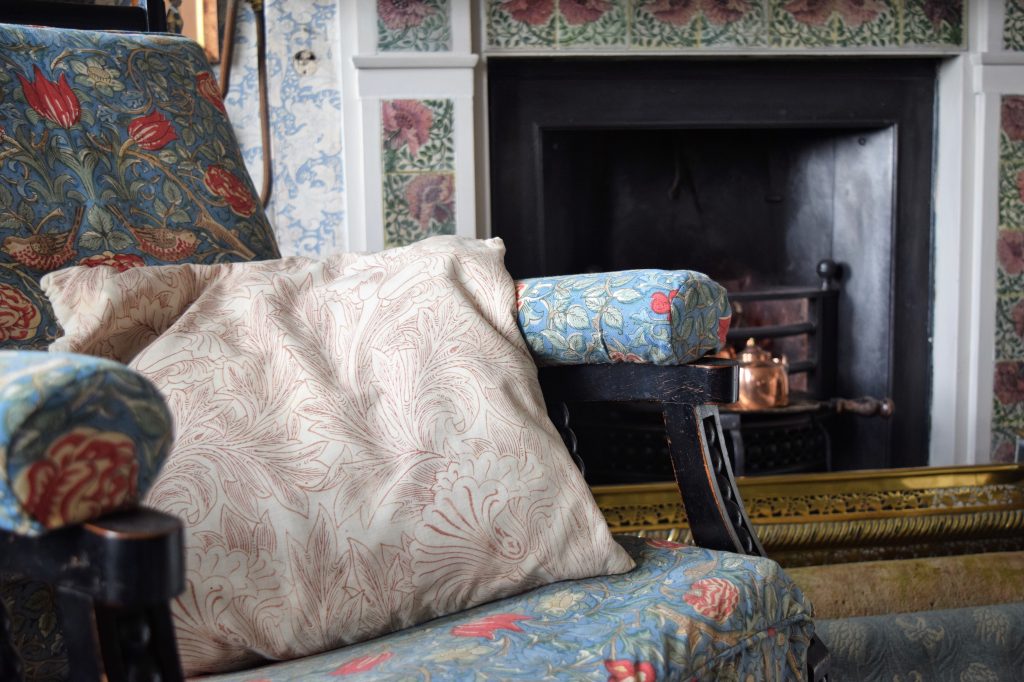
Hammersmith Terrace
Emery Walker (1851 – 1933) was a printer, photographer and typographer. He lived at 7 Hammersmith Terrace from 1903 to 1933 with his wife, Grace. The house is one of a row of seventeen tall, narrow Georgian houses overlooking the Thames between Chiswick Mall and Lower Mall.
When the houses were built back in the 1750s, Hammersmith and Chiswick were still villages outside of London so this area was quite rural.
Emery Walker first moved to number 3 Hammersmith Terrace in the late 1870s and lived there for 24 years. By this time the area didn’t have the market gardens and there were waterworks, breweries, and timber wharves. But the riverside location was appealing to artists and still is today. He moved to 7 Hammersmith Terrace in 1903 and stayed for his last 30 years.
After Emery Walker moved out of 3 Hammersmith Terrace, the calligrapher Edward Johnston moved in (in 1905). There a blue plaque for him on the building. He designed the sans serif ‘Johnston’ font used for London Underground signs up to the 1980s. He also designed the famous London Underground roundel.
Eric Gill, the sculptor and typeface designer (and disciple of Edward Johnson) rented a letter-cutting workshop from Emery Walker in the stable of 7 Hammersmith Terrace. This was his workplace rather than his home address though.
William Morris’s daughter, May Morris lived next door to Emery Walker at 8 Hammersmith Terrace. She was good friends with Dorothy Walker, Emery’s daughter. May was an influential designer and director of the embroidery department at Morris & Co. George Bernard Shaw, the playwright, also lived there with May and her husband for many months, to the detriment of May’s marriage. (It should be noted William Morris’s wife Jane had an affair with Rossetti so relationships were somewhat ‘fluid’ in those days.)
You can see more about who lived along Hammersmith Terrace here.
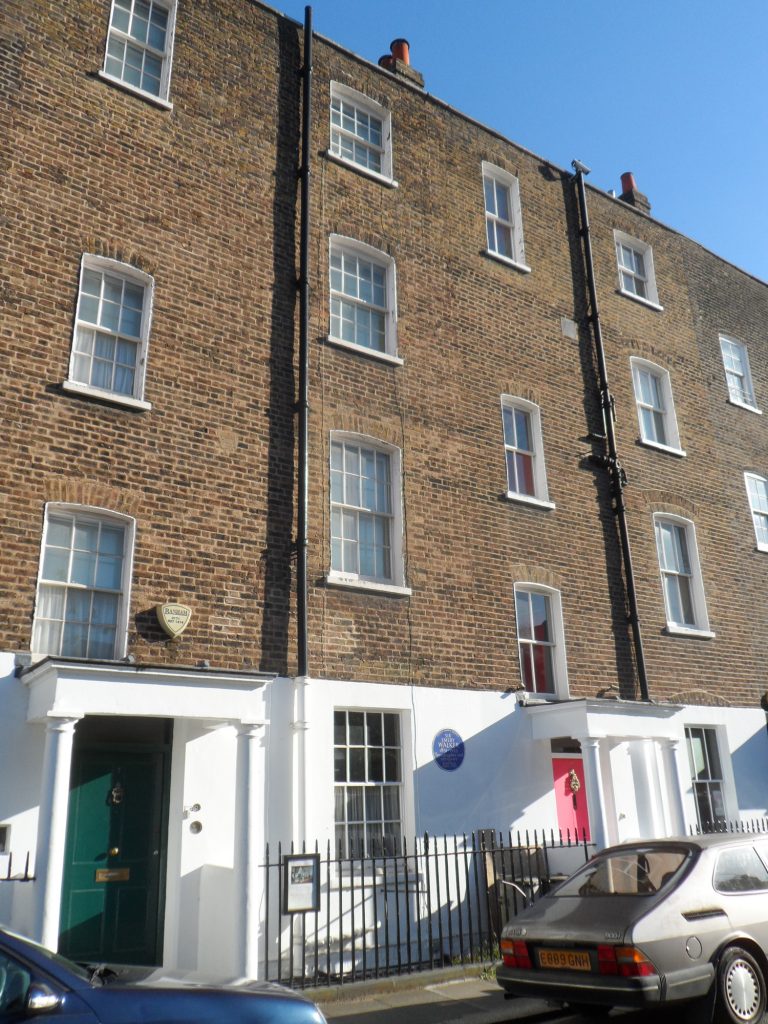
William Morris’s Friend
William Morris “did not think the day complete without a sight” of his friend, Emery Walker. Morris lived ten minutes walk away at Kelmscott House on Upper Mall from 1871 to 1896. (It’s now where you can visit the William Morris Society.)
They became close friends and Walker was an inspirational force behind the private press movement of the 1890s and the early 20th century. He helped Morris to set up the Kelmscott Press.

Emery Walker
Unlike Morris, Walker came from a working class family and was forced to leave school and start work at 13 years old.
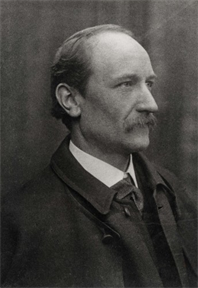
He was first an apprentice draper but then joined the Chiswick-based Typographic Etching Company in 1873. It was a period of new developments in printed reproduction of illustrations and photographs as well as in typesetting. The mainstay of their business was producing blocks for printing line illustrations using photographic negatives.
In 1886, while in his mid 30s, Walker founded his own company, which built a reputation for expertise in photogravure, a technique that could reproduce photographic tones. His firm specialised in cutting-edge techniques for reproducing works of art and photographs as book illustrations and helped to revolutionise the book making industry.
Emery Walker went into business with Thomas James Cobden-Sanderson. While The Doves Press was a success their partnership was not and Cobden-Sanderson made 170 nighttime trips to throw type into the Thames from Hammersmith Bridge to stop Emery Walker from getting them. (You can read about the incident here.) Cobden-Sanderson’s wife paid Walker compensation after her husband died.

Emery Walker was the President of the Arts and Crafts Exhibition Society, a Trustee of the Wallace Collection and a Fellow of the Society of Antiquaries. He received a knighthood in 1930.
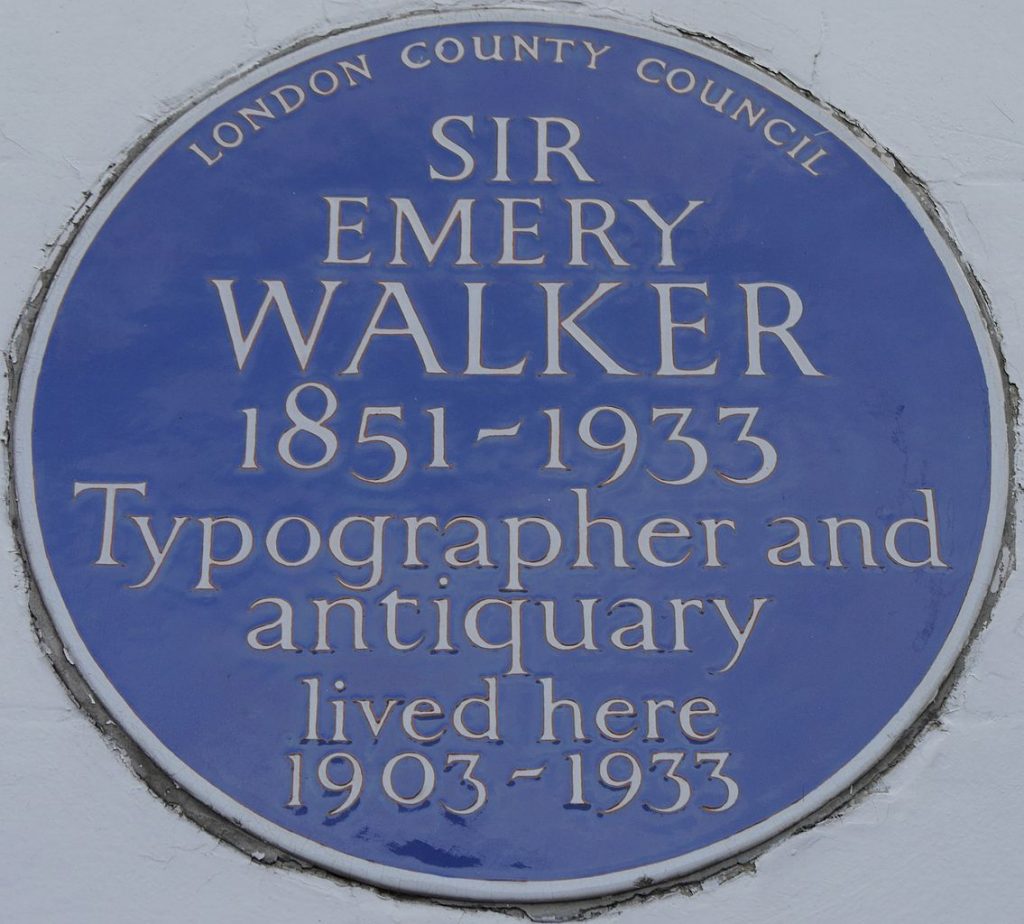
The Walker Family
Emery Walker was married to Mary Grace Walker (1849 – 1920) yet few of her belongings remain in the house as she spent most of her time in the country, due to ill health.
Their only child was Dorothy Walker (1878 – 1963) who was the main female presence at 7 Hammersmith Terrace. Dorothy was an accomplished needlewoman, a student at the Slade School of Art and she travelled extensively for a woman born in 1878. She spent a year in France around 1898, travelled to the United States in 1909, and to Russia in 1913. She also accompanied her mother to Morocco in 1912, returning there with Elizabeth de Haas in 1959.
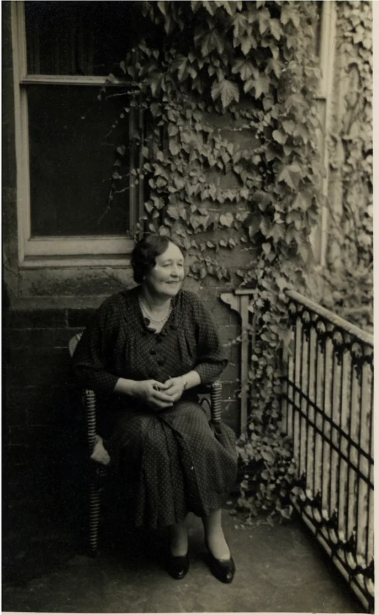
Elizabeth de Haas
Elizabeth de Haas (1918 -1999) came from Arnhem, the Netherlands. She answered an advertisement from Dorothy Walker in The Lady magazine seeking a companion to help her look after the house in 1948, when Dorothy was 70 years old.
She was bewitched by the stories of Emery Walker, William Morris, and the Arts & Crafts Movement, and after Dorothy’s death, devoted herself to maintaining 7 Hammersmith Terrace, just as Dorothy had done before her. It is thanks to her that The Emery Walker Trust was set up to care for the house in 1999.
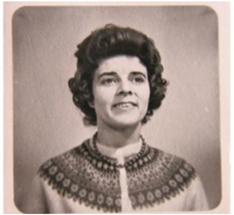
Emery Walker’s House
Which brings us on nicely to the home we can now visit. The house was a private home until 1999 and it opened to the public for the first time in 2005.
Full of original William Morris wallpapers, textiles and furniture, it is one of the best preserved Arts and Crafts interiors in Britain. Many of the objects on display had direct connections to Morris and his daughter May, plus Philip Webb and other makers involved in the Arts and Crafts movement.
Something I didn’t realise when I visited is that Walker didn’t move into number 7 until seven years after Morris’s death. And he didn’t put up any Morris & Co. wallpaper until he bought the house in the 1920s (after his wife has died). So while we may feel we’ve entered a late Victorian home, it’s more of a lovingly curated homage to the Arts and Crafts Movement.
But that doesn’t decrease the importance of this home as it is still a testament to his close friendships with some of the most influential artists and craftsmen of the day and of his travels and interest in collecting objects from around the world.
This multi-layered and eclectic mix of belongings, all of their own interesting provenance, makes this a unique house, perfectly embodying the Arts and Crafts aesthetic.

The House Tour
The tour takes in three floors of the house. The ground floor has the telephone room, the dining room and the garden; the first floor has a small back drawing room and a more impressive front drawing room. And the top floor has the bedroom. I shall presume there’s a kitchen in the basement but I don’t know if the house ever had a bathroom.
The telephone room (can you imagine having a room just for answering the phone?) is now the small gift shop so the dining room is the outstanding room of the ground floor.
This room has been described as the prettiest drawing room in London. There’s Morris & Co. Willow wallpaper and fabric wall hangings from Kelmscott House.
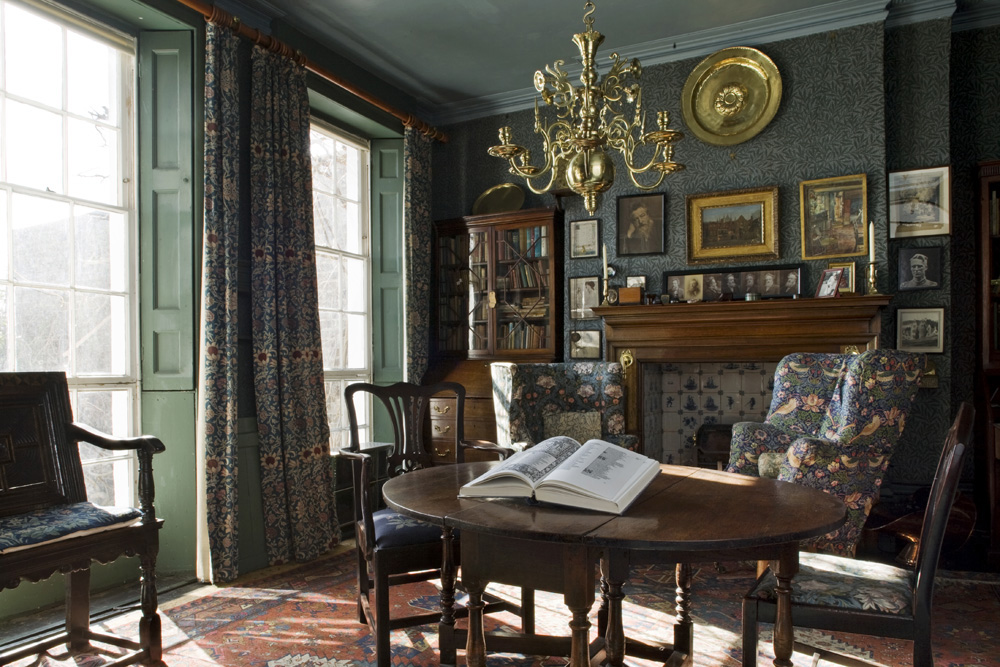
The room has William Morris’s seventeenth century library chair given to Emery Walker by William Morris’s widow, Jane. The tapestry-covered cushion on the medieval chair was made especially by May Morris with the dedication ‘MM to EW’.
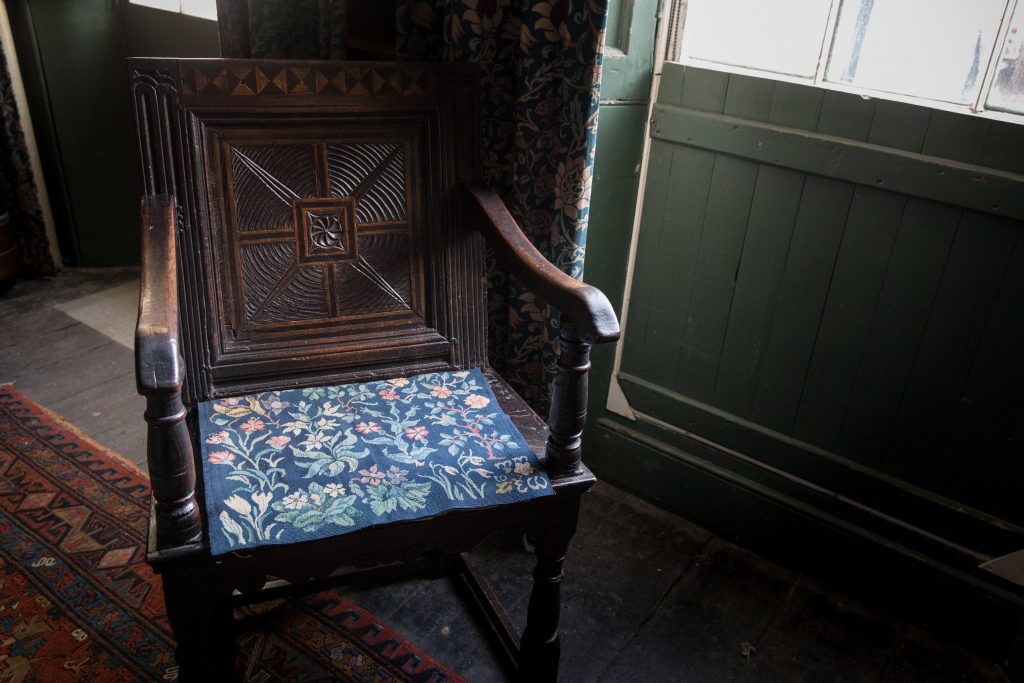
There’s a special box (the Morris drawer) which includes a lock of William Morris’s hair (taken on the day he died) along with glasses worn by Morris. There’s also a photo of William Morris, taken by Emery Walker, on the mantelpiece.
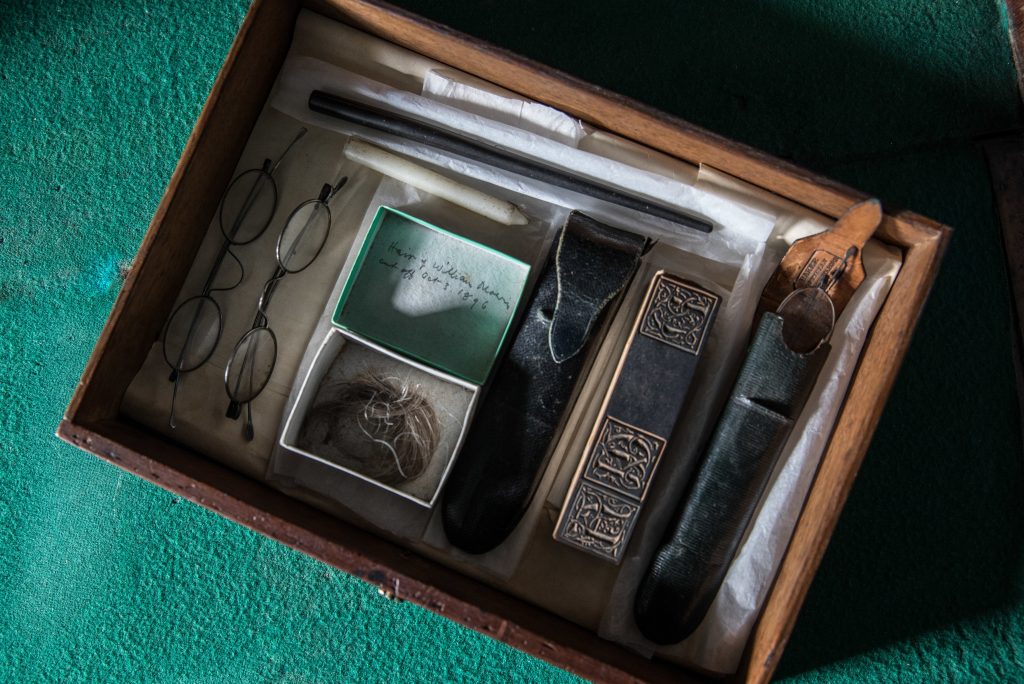
The room includes furniture and glass designed and owned by Philip Webb (who designed The Red House for William Morris) as well as ceramics designed by William de Morgan.
Emery Walker travelled extensively. There’s a jug on top of the bookcase that on its own isn’t particularly valuable but the Trust also has a photo of Emery Walker buying it in Toledo, Spain, in 1905, so its provenance is what’s important.
The dining room connects to the garden. Heading out to see the garden you get to pass a grapevine taken from Hogarth’s House (the former country home of the 18th century English artist William Hogarth in nearby Chiswick).

Originally the houses in this terrace had a river promenade so they could walk to each other’s gardens.
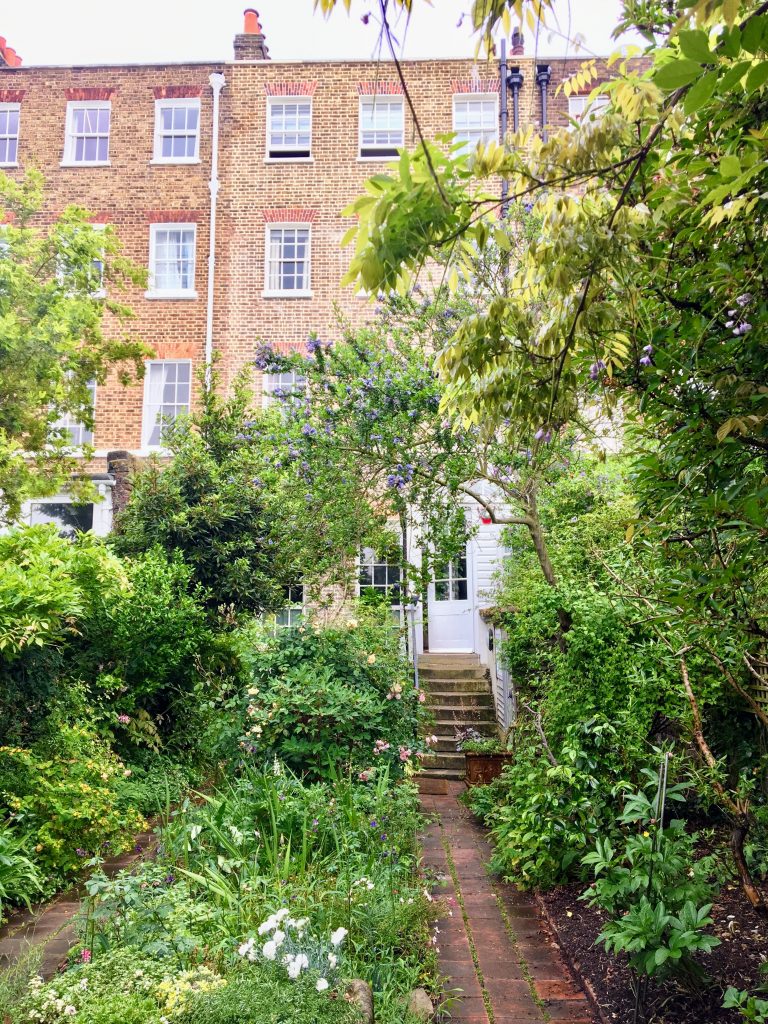
Heading upstairs, there’s a small back drawing room, which is confusingly at the front of the house, but when you see the views from the larger front drawing room all is understood. The room looks out onto the river Thames and must have been a wonderfully relaxing place to take tea.

The drawing room has Morris & Co. Wallflower wallpaper, a Philip Webb plan chest and bookcase on the wall, and a lovely mother of pearl inlaid side table.
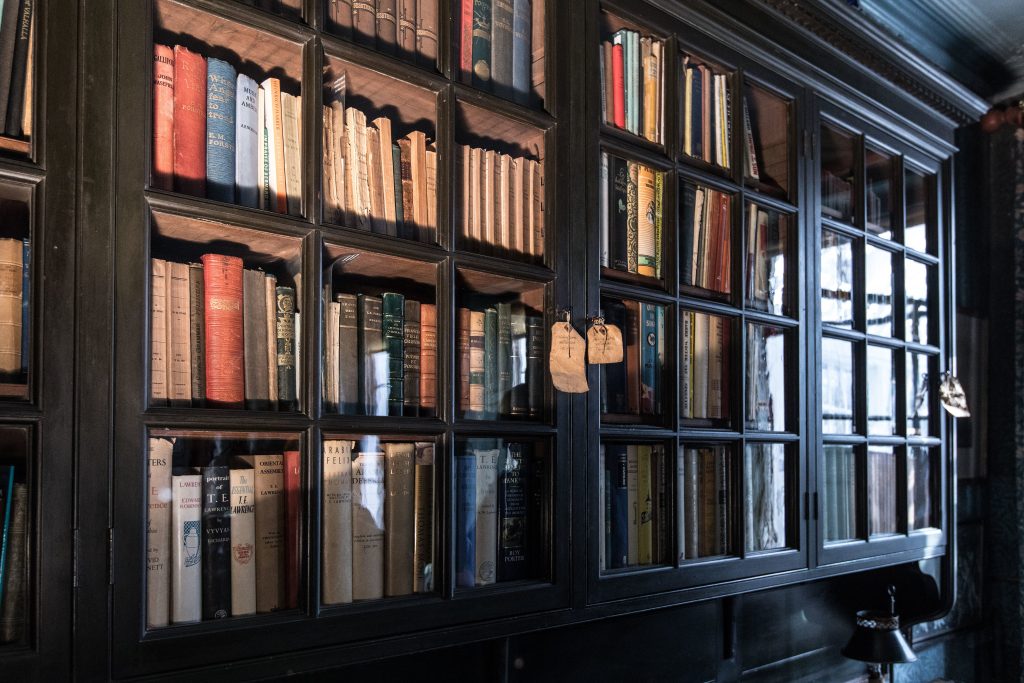
And up to the top floor, the highlight of the bedroom is the embroidered bed cover that was designed and made by May Morris for Grace, the sickly wife of Emery Walker. This was actually laid on her coffin too.
The friendship of the two families is shown further as, on one of the Sussex chairs, there is a cushion designed by May Morris and made by Dorothy, Emery Walker’s daughter.
While the house was closed over the winter, this room had extensive conservation and the wallpaper was painstakingly cleaned. A small patch of wallpaper has been left uncleaned to see the comparison.
More Information
The Emery Walker Trust has digitised the collection so more people can see what has been saved and preserved, and the catalogue should be online soon.
Do have a look at the Arts & Crafts Hammersmith website as it is a partnership between The Emery Walker Trust and The William Morris Society celebrating the Arts & Crafts Movement in west London.
This Apollo Magazine article is also particularly fascinating.
To Visit Emery Walker’s House
To visit you need to pre-book a tour online at www.emerywalker.org.uk/visit
Do note, photography is not permitted in the house but is allowed in the garden.
Tours are for just 8 people with an expert guide and steward on Thursdays and Saturdays. Visitor numbers have to be limited due to the fragile nature of the house.
(The William Morris Society museum opens to the public on the same days, coordinated so that visitors can see both).
Address: Emery Walker’s House, 7 Hammersmith Terrace, London W6 9TS
Nearest Tube Station: Stamford Brook
Official Website: www.emerywalker.org.uk